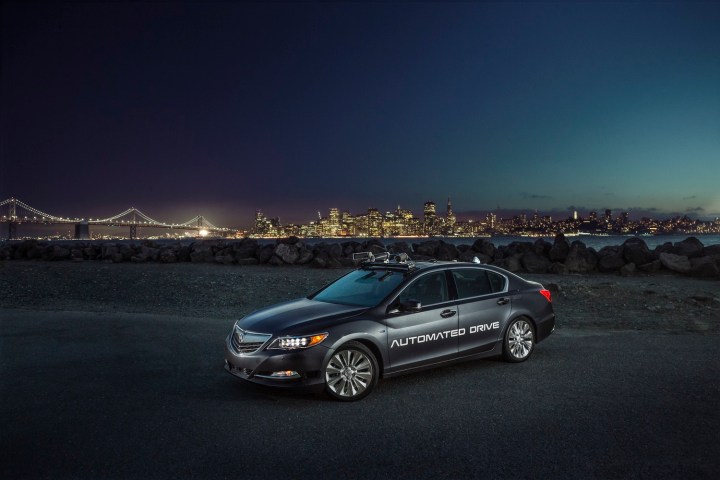
The new test vehicle is much sleeker than the automated RLX unveiled last year, thanks to a lower-profile LiDAR sensor that replaces the spinning turret mounted to the roof of the previous car. Honda says the entire suite of sensors — which also includes radar, cameras, and GPS — is new, along with virtually everything else.
The RLX also boasts higher-performance CPUs and GPUs, with improved cabling, heat management, and circuitry, according to Honda. The software is upgraded too, with new algorithms Honda claims can support more complex testing scenarios.
Sensors are designed to work together to paint a clear picture of the car’s surroundings. Information from each type of sensors is overlapped, playing to each device’s strengths. Radar is good at detecting the relative speed and position of objects, while cameras are better at identifying objects based on size and shape, Honda notes. Combining input from the two makes for a more reliable information stream.
While other automakers, and Google, test their self-driving cars on public roads, the Acura RLX will roam in a controlled environment. Honda set up a research outpost at GoMentum Station, a dedicated autonomous-car test facility on the grounds of the former Concord Naval Weapons Station in the San Francisco Bay Area.
Read more: Audi wants its autonomous cars to drive more like humans
GoMentum features 20 miles of paved roads built on a city-like grid, with buildings and other infrastructure to create a more realistic environment. Rumors spread last year that Apple was eyeing the facility to test prototypes of a self-driving car. While Apple’s car plans are still quite opaque, Honda says its test program is part of a plan to put self-driving technology into production by 2020.
Editors' Recommendations
- Tesla Autopilot vs. full self-driving: What’s the difference?
- Volkswagen is launching its own self-driving car testing program in the U.S.
- Tesla hopes full self-driving beta will be out globally by the end of 2022
- How a big blue van from 1986 paved the way for self-driving cars
- We now know what the self-driving Apple Car might look like


